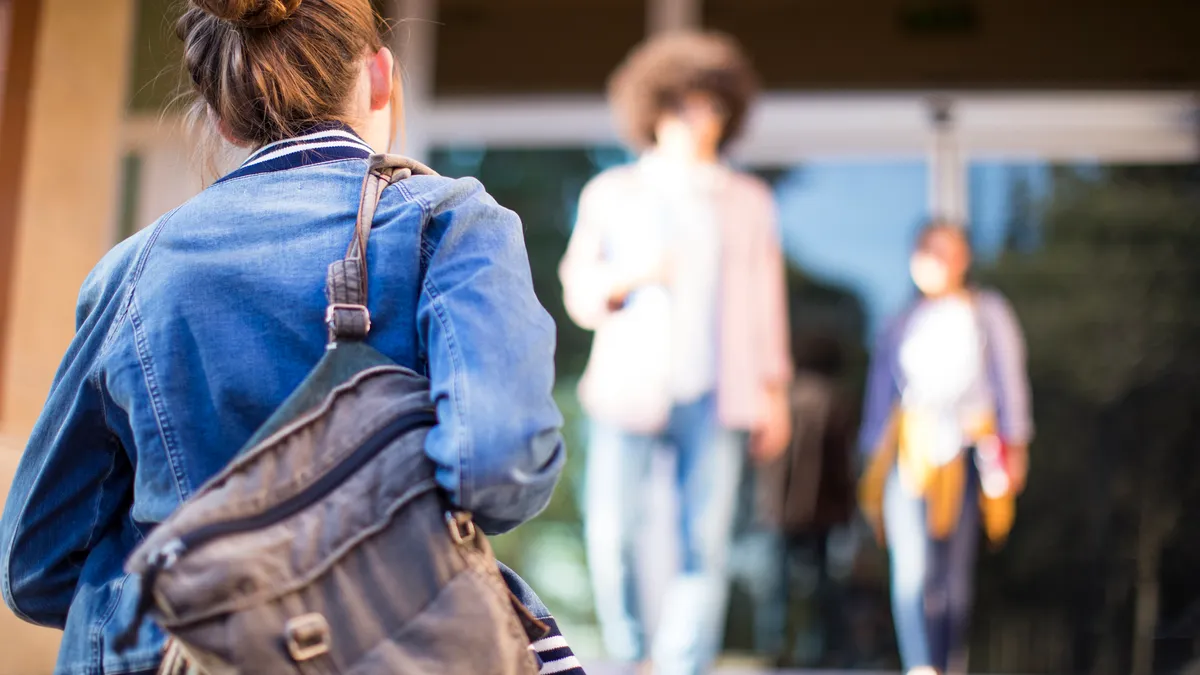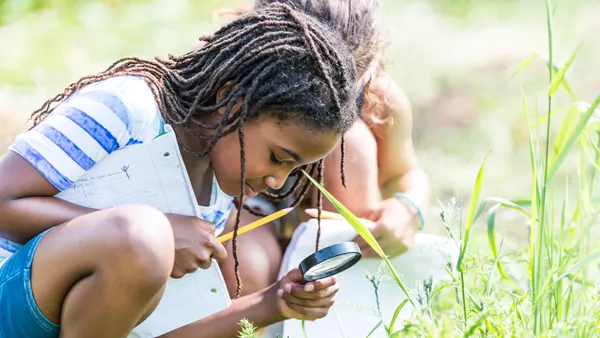Dive Brief:
-
To better prepare students for the more demanding work they’ll face in high school, districts and schools should focus on building a transition action team and developing a statement of need, Gene Bottoms, former director of the High Schools That Work Initiative for the Southern Regional Education Board, writes for ASCD. These efforts can help leaders monitor student readiness and ensure that all students receive access to challenging curricula.
-
A transition action team made up of educators and leaders from both the middle and high schools should work to identify rising 9th-graders who can handle accelerated classes and those who need scaffolding, Bottoms writes. He also suggests that schools offer accelerated math and literacy classes to all students while allowing for extra school time for academic support.
-
A statement of need can help ensure all middle-grade students are on track to take college prep courses and keep stakeholders focused on increasing the number of students across all racial or ethnic groups and socioeconomic backgrounds. Educators should consistently assess how all students can gain access to the curriculum that best readies them for whatever path they choose, from college to a future career.
Dive Insight:
To prepare middle schoolers for the transition to high school, district and middle school leaders can seed steps through the curricula to help students develop a successful mindset. These opportunities can take place in the classroom and through partnerships between schools.
Educators can start by assigning projects that help students learn how to plan, frame and engage in complex tasks, said Judy Frank, director of state and district partnerships at the Southern Regional Education Board. This self-directed and project-based learning helps classes develop the skills that will serve them as they start high school and handle more challenging work.
One assignment could be asking classes to solve issues their community may face, such as a possible hurricane, and develop steps a city council might take to help residents. Another project could be to develop a video game and consider everything from coding skills to conceiving the details that make an engaging game.
“We want to help students become engaged in assignments that are complex in nature that take place across time,” said Frank, a former middle school teacher and principal.
A relationship between middle and high schools can also help students with the transition. That can include holding shared PE classes, gathering middle and high school counselors together regularly, or having 8th grade teachers move up with their students for a week while high school teachers return to 8th grade to meet their future students.
“I worked with a school that used to bring incoming freshmen in to show how to get around the building, how to get to lunch, those non-academic issues,” said Scott Warren, SREB’s division director of Making Schools Work and a former high school principal. “If we eliminate some of those concerns, we can focus on the academic.”
Parents should also be involved, noted Frank. At the start of 6th grade, for instance, she would have signs welcoming the incoming class with their high school graduation year. “Parents would say, ‘But we’re here for middle school,’” she said. “We would say, ‘But [graduation] is the ultimate goal.’”











